Get PeakVisor App
Sign In
Search by GPS coordinates
- Latitude
- ° ' ''
- Longitude
- ° ' ''
- Units of Length

Yes
Cancel
Share ×

Scan the QR code and open PeakVisor on your phone
❤ Wishlist ×
Choose
Delete
With rolling hills and forested slopes, the Belknap Mountains are a small range of peaks located in the east-central part of the US state of New Hampshire. The range contains 26 named mountains, the highest and most prominent of which is Belknap Mountain (2,382ft/726m).
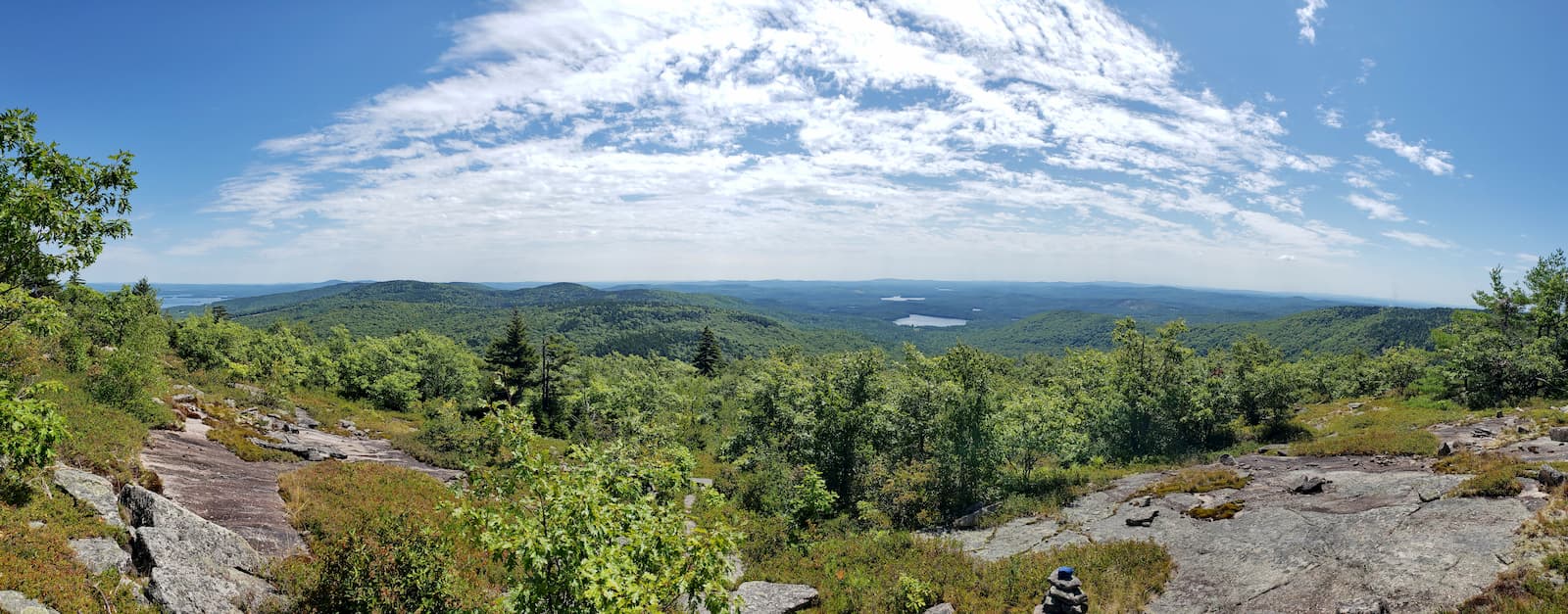
Nestled within the Lakes Region of New Hampshire, the Belknap Mountains are located just north of the state capital of Concord. The range is situated to the south of Lake Winnipesaukee and to the west of both the city of Laconia and Winnisquam Lake.
For the most part, the range is located within Belknap County. Indeed, Belknap Mountain, which is the highest point in the range, is also the tallest in the county.
The range is approximately 8 miles (13km) long and forms an arc that starts near the town of Gilmanton, curving northeast to the town of Gilford and then back to the southeast near the town of Alton.
As part of the New England Upland, the Belknap Mountains are located in a hilly, but not particularly mountainous region of New Hampshire, alongside the Ossipee Mountains, which are just to the north of Lake Winnipesaukee.
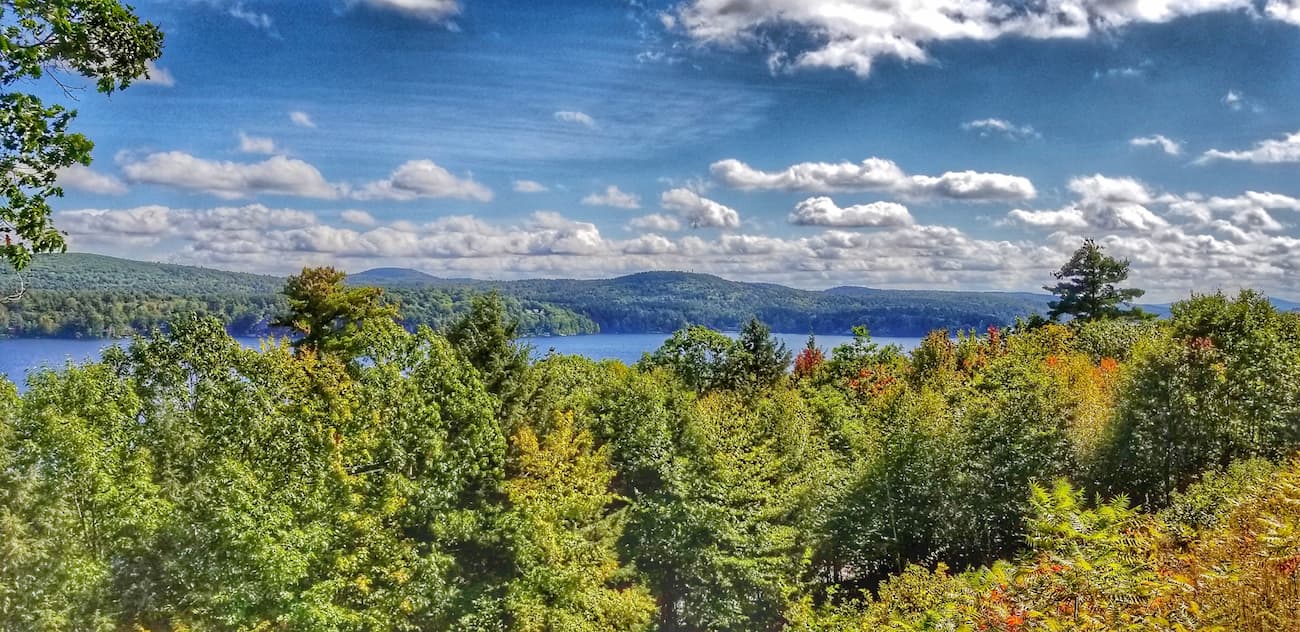
This puts them in sharp contrast to the much more mountainous region about an hour north of the range, which is home to the White Mountains and its subranges, the Sandwich Range and the Mahoosuc Range.
Moreover, unlike the White Mountains to the north which are almost wholly contained within the White Mountain National Forest, the Belknap Mountains are a mix of publicly-owned, quasi-publicly owned, and privately-owned land. The central most part of the range is home to a sizable part of the 1,300 acre (530ha) Belknap Mountain State Forest.
Geologically, the Belknap Mountains are part of the New England Upland, which is a subsection of the greater Appalachian Mountain range. The Appalachians extend as far south as the US state of Georgia and as far north as the Canadian province of Newfoundland and Labrador.
Interestingly, the Belknap Mountains share a very similar geologic history to the Ossipee Mountains just to the north.
Much like the Ossipee Mountains, the Belknaps are the remnants of a well-eroded ancient volcanic ring dike that formed during the break up of the supercontinent of Pangea.
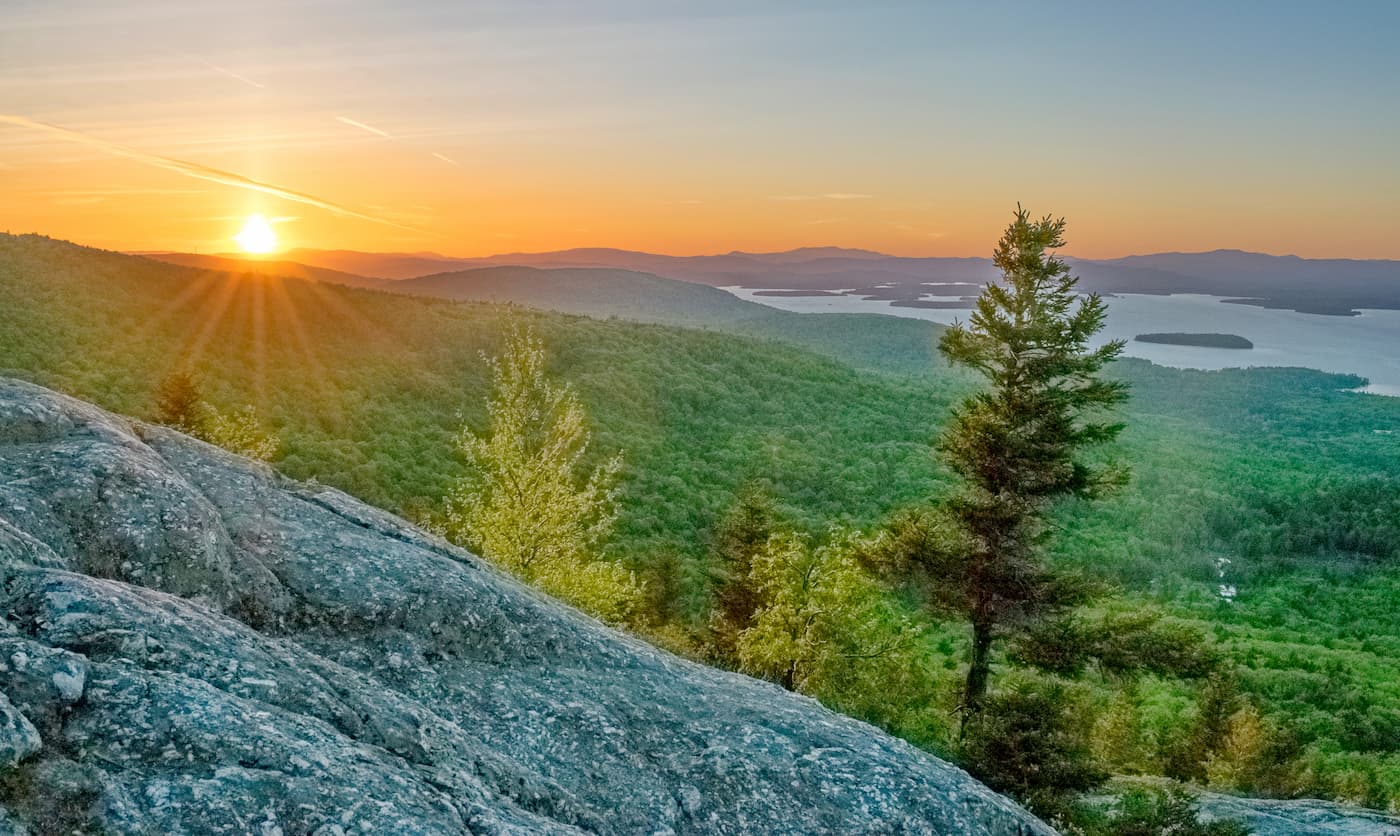
During this time, magma started to rise to the surface of the Earth as Pangea broke apart. This magma formed a large magma chamber, which eventually collapsed, resulting in the sinking of the bedrock located directly above it. As this bedrock collapsed, the magma was pushed upward, cooling and forming a large ring dike.
The greater Belknap Mountain Complex has a unique and complex geologic history and comprises a wide range of different bedrocks, including gabbro, biotite granite, syenite, and breccia. Meanwhile the ring dikes located within the complex are mostly syenite, monzodiorite, and Conway granite.
However, the surficial geology of the region more clearly encapsulates the impact that recent glaciation had on the region. Indeed, the entire Lakes Region of New Hampshire shows the depositional power of the widespread glaciation that covered the area until about 14,000 years ago. These glaciers left behind a number of large proglacial lakes, eskers, and other glaciofluvial deposits.
Some of the most notable peaks in the range include Belknap Mountain, Gunstock Mountain, Piper Mountain, Mount Klem, and Mount Mack.
Like much of the surrounding ranges, the Belknap Mountains are located within the New England/Acadian forests ecoregion. This ecoregion covers much of the northeastern part of the US, including most of Vermont, New Hampshire, Massachusetts, and Maine, in addition to parts of Nova Scotia, New Brunswick, and Québec in Canada.
Aptly named, the New England/Acadian forests ecoregion is heavily forested, with a mix of both deciduous and coniferous trees. In the Belknap Mountains, the woodlands are considered mixed, with both deciduous trees and conifers throughout.

Between about 1,400 and 2,500 feet (426 to 762m) in elevation, the range is mostly dominated by northern hardwood-conifer forests. These forests contain an array of different tree species, including eastern hemlock, balsam fir, white pine, American beech, yellow birch, and sugar maple.
The northern hardwood-conifer forests are home to many different wildlife species, including martens, lemmings, bears, and white-tailed deer. Bird species that are sometimes found in these forests include bald eagles, Canada warblers, golden eagles, northern goshawks, olive-sided flycatchers, ruffed grouse, and wood thrush.
The area in and around the Belknap Mountains has been home to humans for thousands of years. While countless people have lived in the region, the tribes of the Wabanaki Confederacy were among the most dominant groups in the range when European colonizers arrived during the 17th and 18th centuries.
Some of the first Europeans to visit the region arrived in the mid-1600s on a reconnaissance expedition known as the Endicott Surveying Party. While they did not settle permanently in the area, a small fort was built in the area that would later become the city of Laconia in 1746. However, the relative remoteness of the region delayed permanent European colonization in the area until the 1760s.

After establishing more permanent settlements in the area around the Belknap Mountains, the region quickly became self-sufficient, establishing agricultural, logging, and manufacturing operations during the 18th and early 19th centuries.
Interestingly, around the turn of the 19th century, the region's economy became heavily dependent on manufacturing, which was spurred by the creation of a number of water-powered textile mills, including the Belknap Mill, which is now a National Historic Landmark.
By the mid 1800s, railroads arrived in the region around the Belknap Mountains, greatly improving access to Concord, Manchester, and Boston. Steamboats also started operations on Lake Winnipesaukee at the time, allowing for better trade throughout the region. The development of roadways during the 19th century also drastically improved commerce and tourism in the area.
These days, the Belknap Mountains' location at the heart of New Hampshire's Lakes Region has helped drive year-round tourism in the area. Lake Winnipesaukee is a particularly popular destination, thanks to its beaches, swimming, water sports, and even winter-time ice fishing opportunities.
Moreover, the range is home to the Gunstock Mountain Resort (formerly known as the Belknap Mountain Recreation Area), which offers downhill skiing and snow tubing during the winter months as well as a toboggan-style roller coaster in the summer.
Despite its small size, the range is home to a surprising number of trails and recreation opportunities. Here are some of the best places to check out during your trip to the Belknap Mountains.
The Belknap Range Trail is a path that follows along other pre-established trails from Gunstock Mountain Resort to Mount Major. It is approximately 12.2 miles (19.6km) long and allows hikers to tag a number of major summits, including Mount Rowe, Gunstock Mountain, Mount Klem, Belknap Mountain, Mount Mack, Straightback Mountain, Mount Major, and Mount Anna.
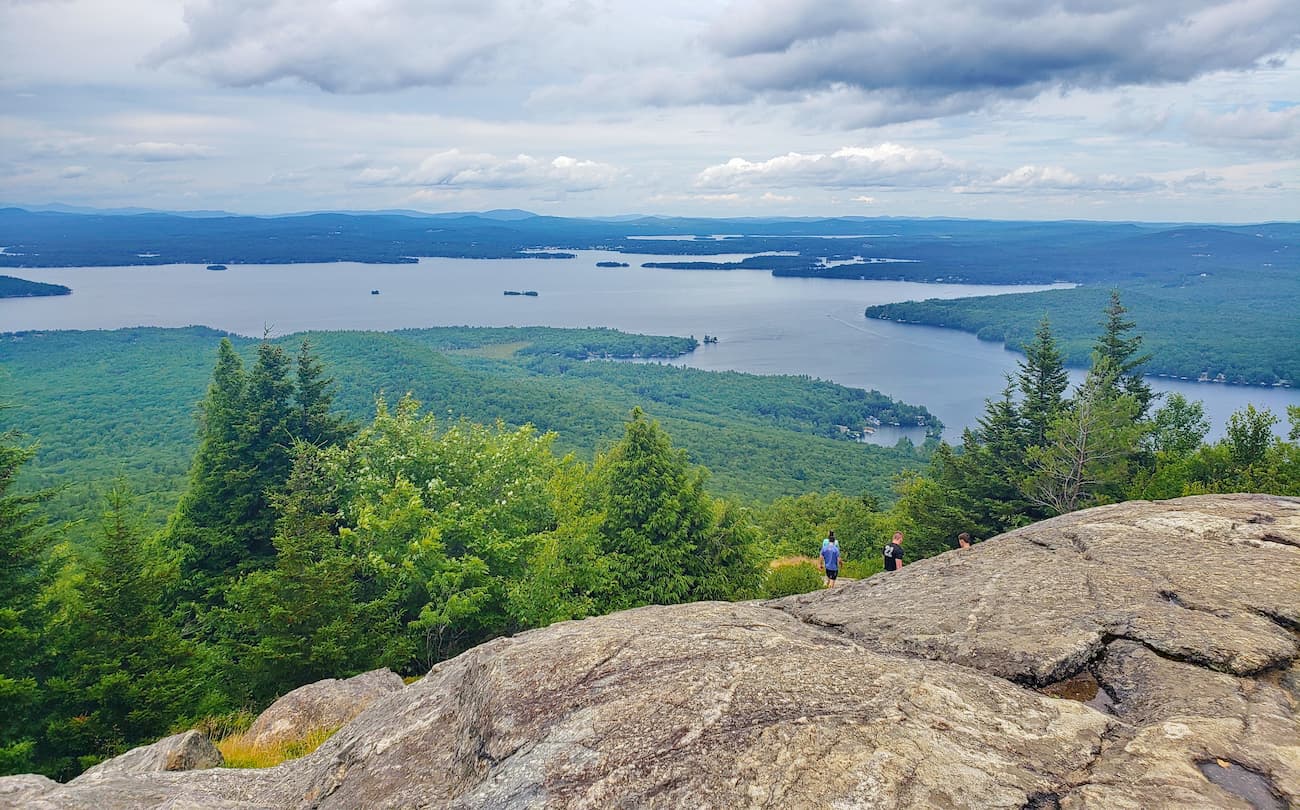
The trail is challenging, but rewarding, providing excellent views of the surrounding region, including the Ossipee Mountains to the north. There are also a number of alternate routes available for people looking to cover some extra mileage during the day.
Mount Major is a popular hiking destination and there are 3 trails to the summit. Hikers can take the Main Trail (1.5mi/2.4km), the Brook Trail (2.4mi/3.9km), or the Boulder Loop Trail (2.4mi/3.9km), each of which provide different views and recreation opportunities along the way.
At the top of the peak, there are some remains of a hut built by George Phippen, a local landowner that lived in the region during the early 1900s. He built the hut as a refuge for hikers in harsh weather, though the region's strong winds eventually blew the hut's roof off its foundations.
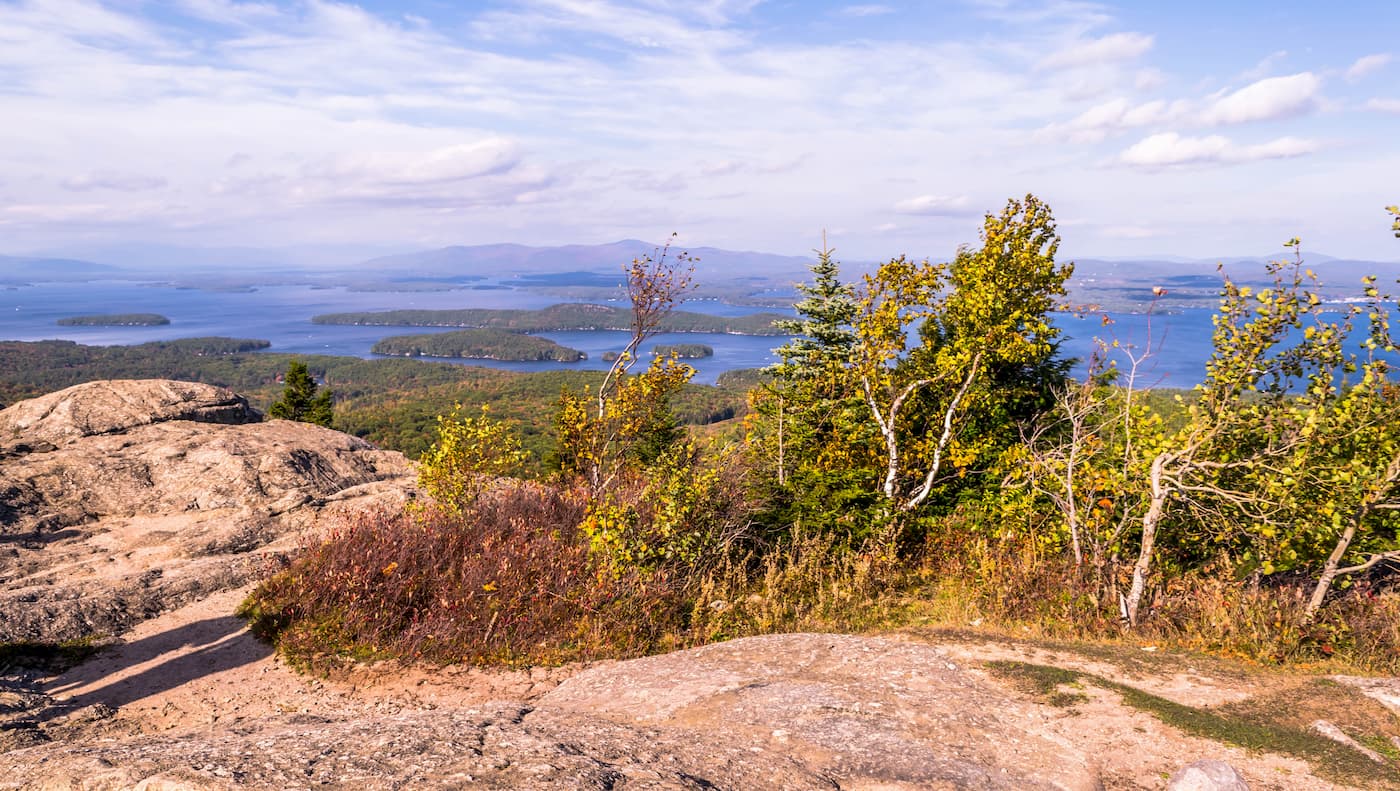
Here are some of the largest towns and cities to check out during a trip to the Belknap Mountains:
The city of Laconia is located just to the northwest of the Belknap Mountains on the eastern shores of Winnisquam Lake. It is home to approximately 16,000 people and it is a cultural and commercial center of the Lakes Region.
Laconia is known for its festivals and major events. These include the Laconia Motorcycle Week, the Laconia World Championship Sled Dog Derby, the Laconia Multicultural Festival, and the Pumpkin Festival.
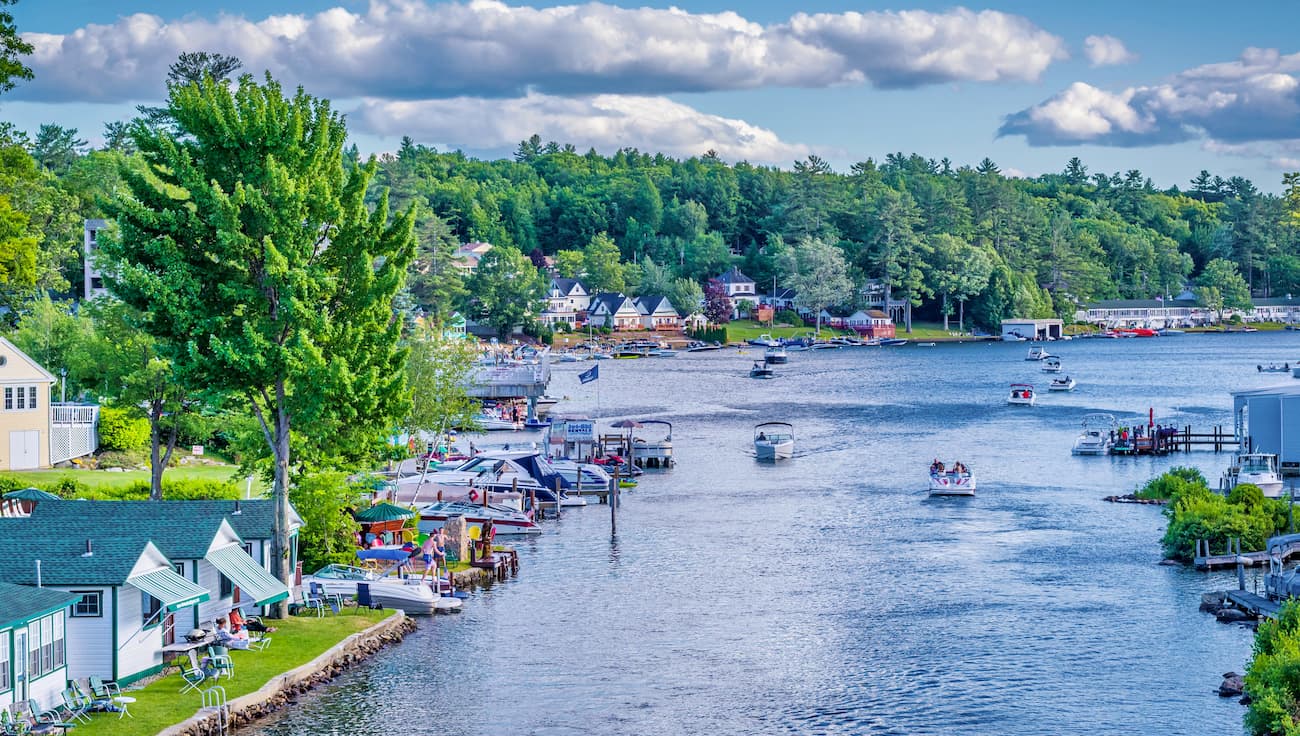
Located to the south of the Belknap Mountains, Concord is the capital city of the state of New Hampshire. The city is home to about 43,000 people, so it is far from the largest city in the state, though it is just 20 minutes from the commercial center of Concord and 1 hour to Boston.
Although there is no commercial airport within Concord, it is within a short drive of the airports in both Manchester and Boston. Moreover, Concord has good bus service to Boston and elsewhere in the state.
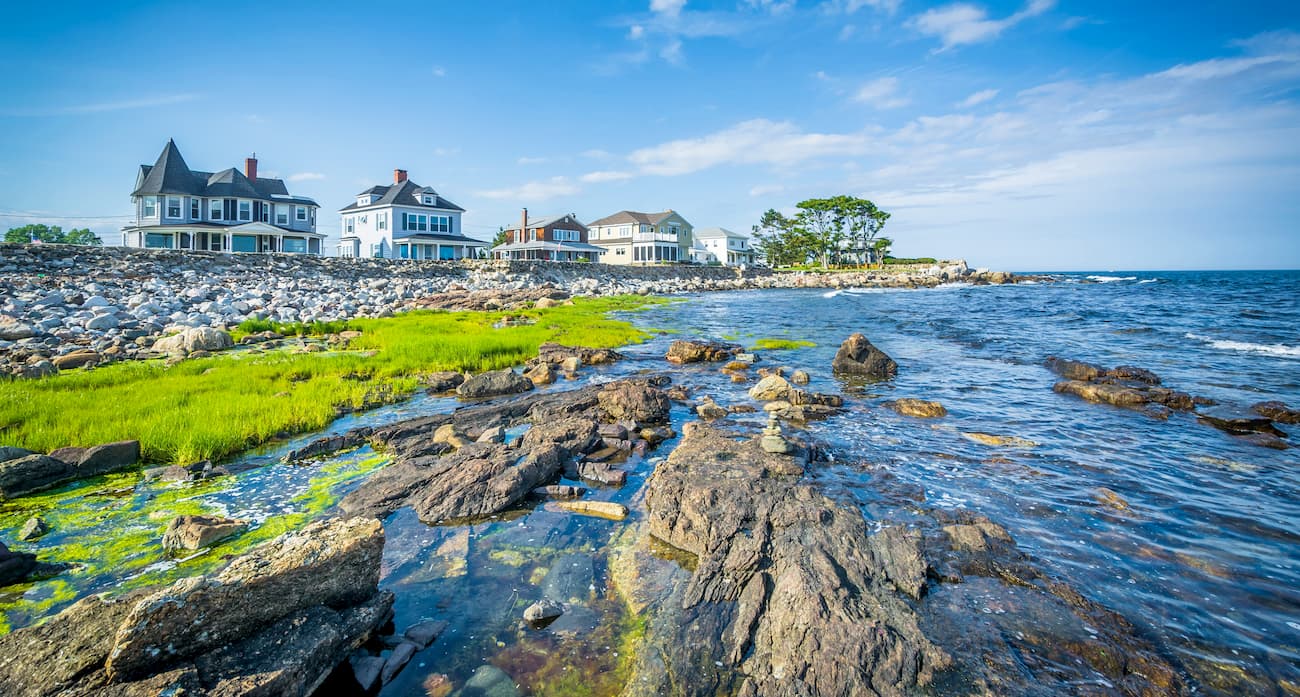
Explore Belknap Mountains with the PeakVisor 3D Map and identify its summits.








